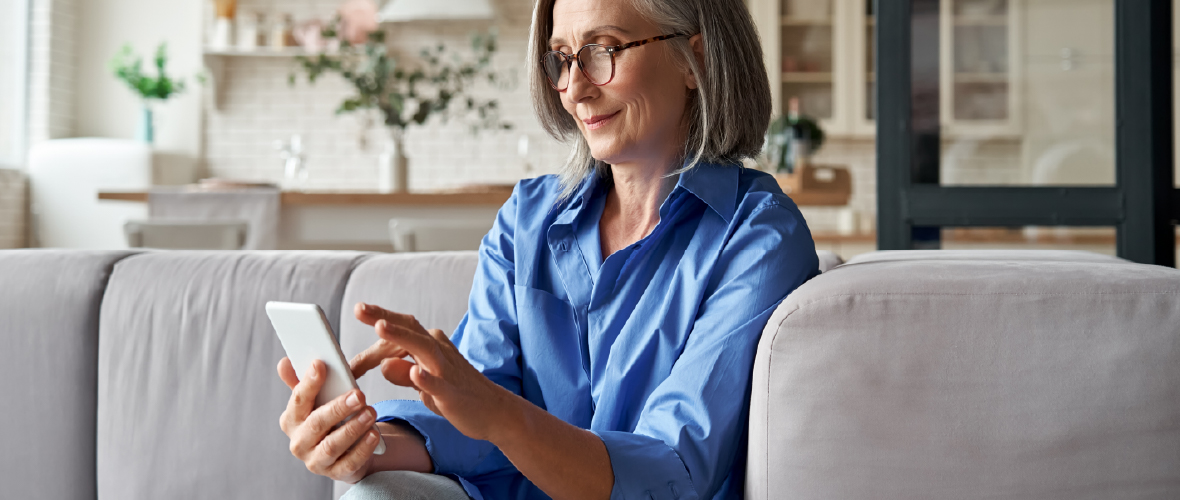Over the past decade, we’ve seen a swift integration between our virtual and physical lives. We’re online for most of the day through computers, smartphones, tablets, wearable devices, or smart home technology.
Today, consumers rely on these devices and their related applications to make their lives healthier and easier. Healthcare practitioners are no exception. The mHealth—short for mobile health—market consists of mobile applications used to practice medicine and support healthcare. The market was last valued at $40.7 billion in 2019 and is expected to reach $236 billion by 2026. mHealth applications help healthcare practitioners manage administration work, improve communication with patients, and increase productivity.
How mHealth Apps Enhance Physician Convenience, Communication, and Administration
Consumers use healthcare applications to reach diet and fitness goals, manage their weight, refill prescriptions, improve sleep, meditate, and communicate with healthcare providers. Meanwhile, the benefits of mHealth applications for physicians lie in administration, support, and communication. An estimated 80% of physicians now use mobile devices as part of their daily practice, and this statistic will only increase as telehealth visits become standard in the healthcare industry.
These tools not only help physicians run their practice, but they can also enhance the way healthcare is administered to patients. According to PWC, 56% of physicians use digital therapies for evidence-based therapeutic interventions. 26% of patients have inquired about these tools. These advancements and other mHealth trends are helping to improve patient care and drive better clinical outcomes.
Patients are Capturing and Sharing More Personal Health Data
Every action a patient takes within a healthcare application creates data. Many patients track their weight, nutrition intake, heart rate, sleep, and other vitals regularly. This information can then be shared with healthcare providers to provide a more accurate personal history of the patient.
This patient-led data sharing presents a paradigm shift for the industry, reflecting other healthcare advancements such as greater data transparency and enhanced communication between providers and patients. Patients play an integral part in driving their own healthcare experiences and taking greater ownership of their health.
The Advantages of a Layered Mobile Communication Approach
In a single day, we use multiple means of communication through our smartphones. To respond to this, healthcare providers are adopting varied communication channels to meet patients where they are. Some of the most popular methods include practice management solutions, video telehealth calls, chatbots, and text messages.
With practice management software, physicians can communicate securely, share information, and provide patient-facing scheduling and payment tools. These solutions are often integrated with electronic health records (EHRs) to share patient data securely, as well. In order to treat patients safely during the COVID-19 pandemic, healthcare providers are leveraging video chat to provide telehealth services. This custom is certain to continue even post-pandemic as it offers a convenient way to expand the accessibility of healthcare.
Chatbots can also provide personalized real-time messages to patients. They can be used to direct patients to the correct contact information or an individual web page based on their needs. These tools can be implemented to function on responsive practice websites so patients can quickly find the information they’re looking for on-the-go. Text messages can be used for appointments and bill reminders to reduce no-shows and slow payments.
Technologies to Monitor Treat Patients from Anywhere
According to the Center for Disease Control, 90% of healthcare expenditures in the United States are for the treatment of chronic conditions. Remote patient monitoring (RPM) has moved to the forefront of healthcare technologies in recent years as a tool to manage these chronic conditions better. In the same vein as telehealth, RPM technologies allow providers to review patient vitals from anywhere. They are often combined with real-time notification alerts of any changes in patient vitals.
Patients may be in nursing facilities, hospitals, at home, at work, or any other location, and the information captured by RPM technology can be used for further assessment and development of treatment plans. To aid in the fight against COVID-19, healthcare providers across the country are using RPM technologies to monitor patient recovery after discharge.
By leveraging mHealth applications, physicians can truly put convenience in the palm of their hands. While these applications won’t replace the medical practice, they will help ensure that assessments and treatments are based on real-time, accurate patient data.
We know how important it is to be able to care for your patients from anywhere. That’s why RXNT designed our solutions to support the way you work. Our mobile applications are secure, compliant, and intuitive. You can practice from anywhere, at any time, without compromising patient care. We’ll be releasing our patient mobile app soon, so stay tuned for more details!




